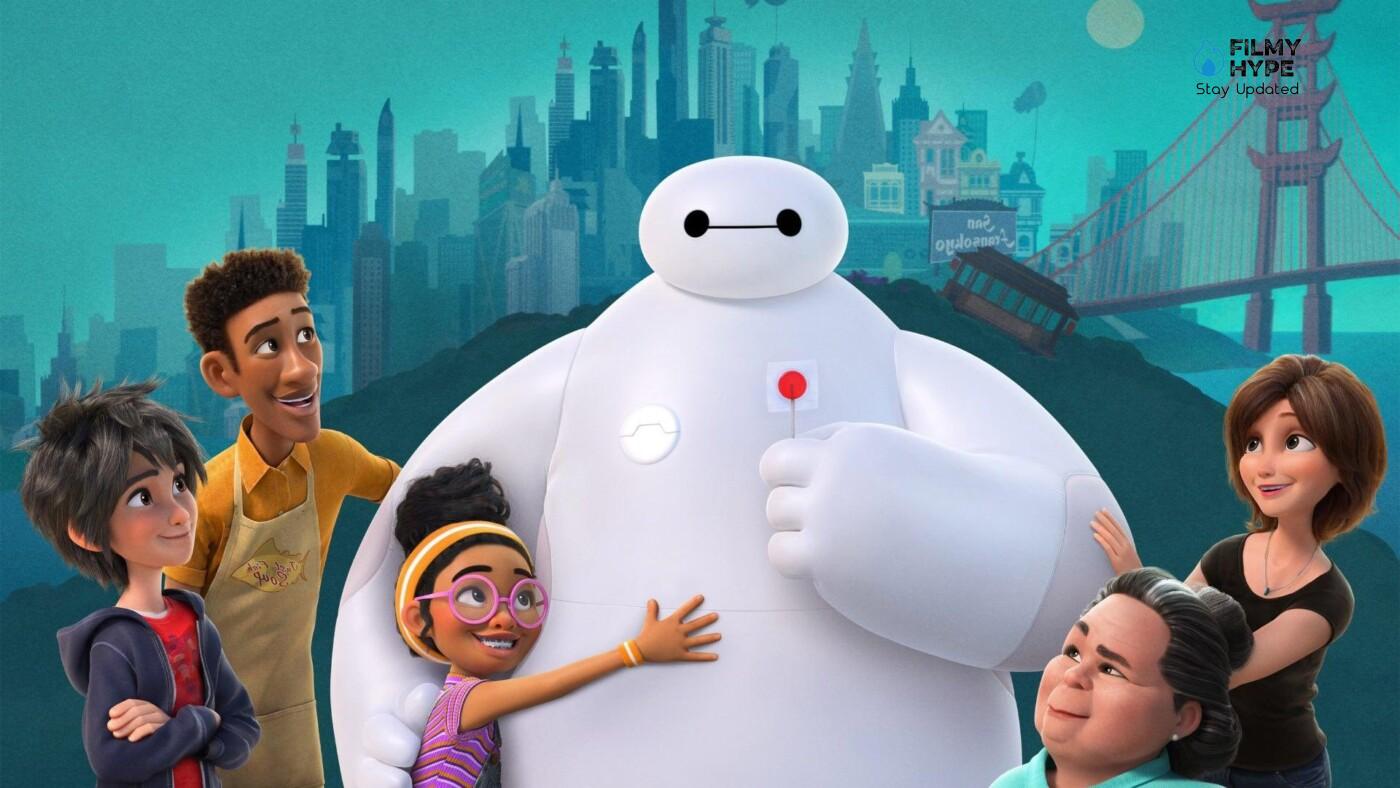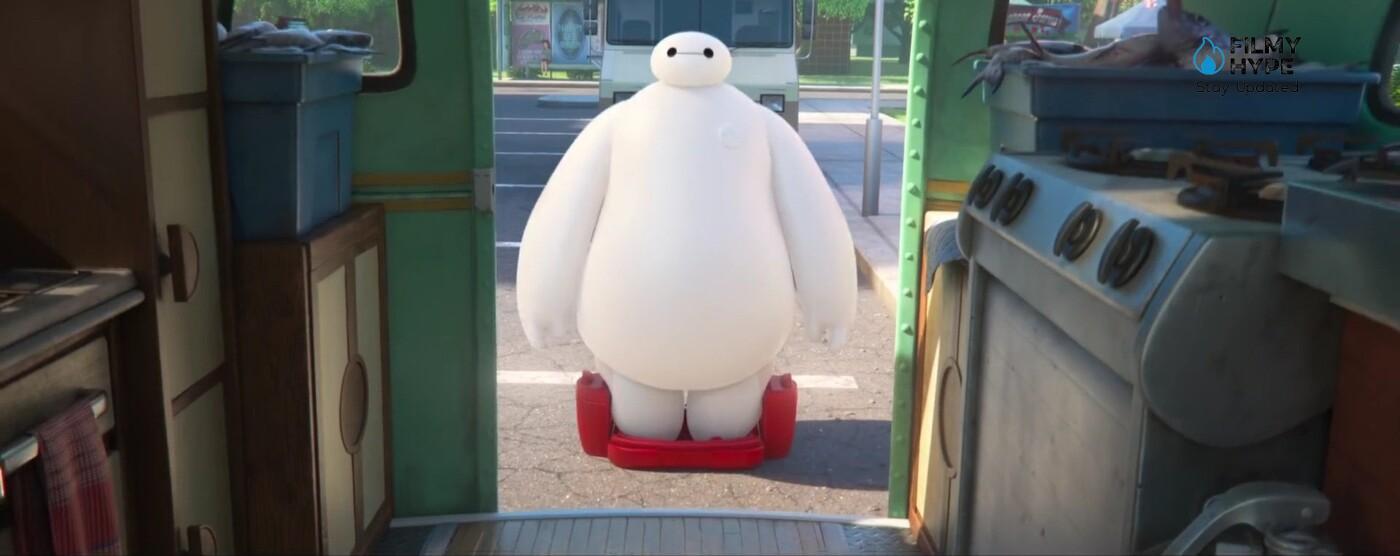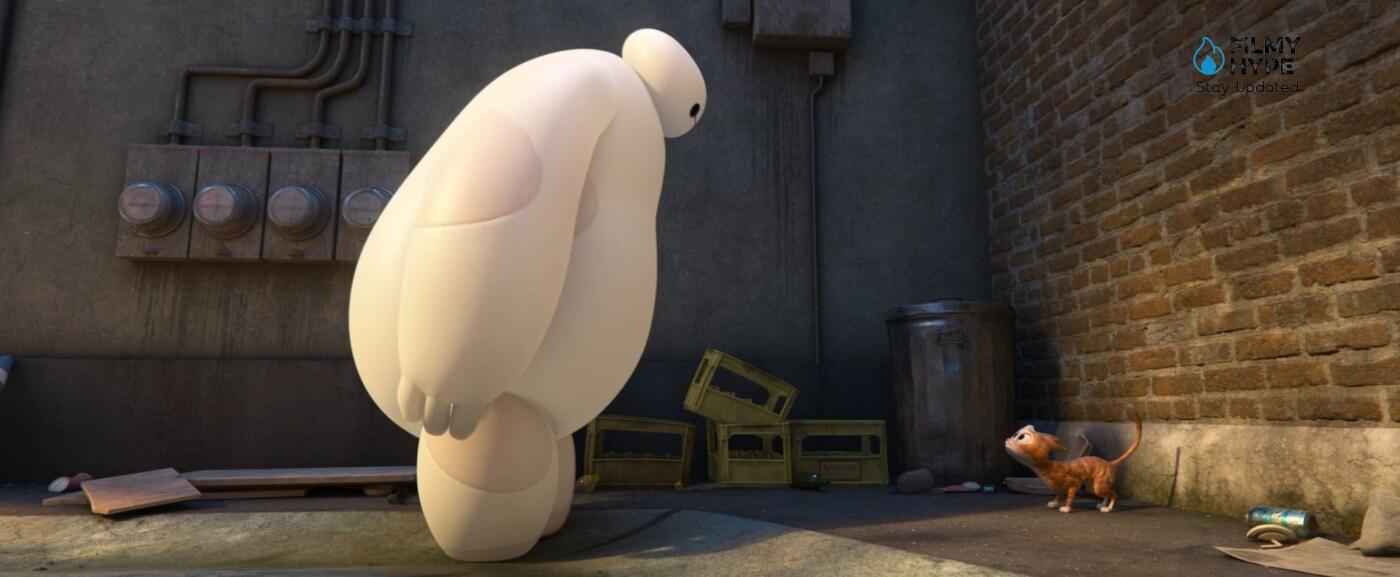Baymax! Series Review: The Inflatable Robot From Big Hero 6 Returns To Disney+
Stars: Ryan Potter, Scott Adsit, Sarah-Nicole Robles
Creator: Don Hall
Streaming Platform: Disney+
Filmyhype.com Ratings: 4/5 (four stars) [yasr_overall_rating size=”large”]
For the series the health workers, the beautiful ones, from 29 June 2022 on Disney+, there is Baymax! Series the new animation offering from Walt Disney Animation Studios. Up and down the multi-ethnic streets of San Fransokyo with six episodes, lasting eight minutes each, which bring the unmistakable healthcare robot we had already seen at work with the 2014 Oscar-winning film to the attention of the public, Big Hero 6. Baymax is back, more adorable than ever. Baymax! is a series created by Don Hall, who had previously been the director of Big Hero 6. Don Conli and Bradford Simonsen produce, and Cirocco Dunlap is writing. In the cast of the original dubbing Scott Adsit lends his voice to the rounded protagonist, among the non-protagonists there is also Maya Rudolph.

The series is presented in a very similar way to Dug and Carl, another miniseries already available on the platform that featured the dog from Up. Starting from one of the most beloved characters of their respective films, both comic and innocent, both miniseries return to the universes that saw them born to tell us unique stories seen through the eyes of a dog, in the case of Dug and Carl, or a robot, in the case of Baymax!
Baymax! Series Review and Analysis
Baymax‘s character always manages to break through the viewer’s heart with grace and sweetness. Not only that, but he is also an unconscious vehicle of a truly remarkable comic streak, which becomes the carrier in many moments of the series. The contrast arises in fact from his programming to treat people who, often, do not want to be treated, then revealing a second problem or difficulty, so that our medical assistant ends up treating not only the body but also the spirit of those he meets.
Another important element that we would like to underline is the difference with which Baymax is treated in this series dedicated to him. It is, we could say, a return to origins, as the robot was born just as a medical assistant and not as a superhero, so now we see him grappling with a purpose perhaps even nobler than his work in armor, but still always at the service of others. The face designs and the profile of the imaginary city that we have also seen in the cinema and the Big Hero 6 series are back, and this creature with a very simple design and a clear and direct gaze on the world returns, a world that Baymax faces with great purity, disarming those who try to contradict him or those who try to escape his care. Relentless and determined helper, Baymax will always find ways to heal and help those in need.
Big Hero 6 had already had its tail on the streaming platform thanks to a tailor-made TV series. However, a focus on the most iconic character and Baymax was missing! it serves precisely to fill this gap. Don Hall explains that the keystone of the operation was to find a way to bring Baymax closer to the life, needs, and ordinary problems of normal people. Trying to get the most out of the encounter between a remarkable and out-of-scale profile, that of the protagonist. And more realistic, everyday bounties, stories, and problems.
To make things work, the series focuses on a smaller format, about 8 minutes per episode. And on a schematic and easy narrative structure because it is important that the viewer, especially the young one, enters the story without wasting time. In the beginning, in the foreground, there is always a normal life. A person, normal too, with a load of perspectives, regrets, and problems. It is a physical, external problem that piques Baymax’s attention, it is his work, but he also knows how to combine this with the ability to go beyond the surface of things. It takes little to understand what the priority is for Baymax! The decisive intervention is inside the soul of the people.

Cass has a problem with her ankle, Kiko is afraid of water, Sofia is at an important crossroads in what is probably the best episode of the series, and Mbita has done badly, let’s say. This is external because in the intimacy of the characters there is always something that doesn’t quite add up and the visible problem is only how an interiority in crisis finds a way to ask for help. Obviously, at the beginning nobody trusts Baymax, nobody wants it, nobody looks for it. The humor of the series comes from the stubbornness with which the robot insists on taking care of others, clumsy, clumsy, and very tender, even when no one seems to want this help. Not so, Baymax is right to do what it does.
The directors change, they are in four distributed over six episodes, but the formal installation of Baymax! and his general tone, humor tinged with innocence and a hint of emotion, remains essentially the same. With just a swerve, inevitable precisely for internal issues to the rhythm of the story, given the conclusion of the series. The risk of the operation may partly be precisely that of the schematic nature of the structure and the excessive readability of the intentions, but things work anyway because the story moves fast.
It has that choreographic sense of things, the unrealistic fluidity of action that is proper to animation. The narrative mechanism, starting from physical trouble to discover something more articulated at the level of the interiority and then resolving everything, inside and out, slips without too many jolts. Baymax! he does not seek extemporaneous shocks, easy revelations. Especially since its message, the moral of the story is essentially emotional. A hymn to empathy, a celebration of friendship, solidarity, and simple values that warm the heart and make life beautiful. There is no lack of sensitivity very much in line with the times.
The homage to the health system and its operators is partly a coincidence, partly a conditioned reflection of the times. After all, Baymax! it is a series that, in the extreme conciseness of the formula, is always very careful to provide the right message on things, we are talking about multi-ethnicity (pay attention to the wide cultural scope offered by the characters and their background) but not only. Progressive and human warmth, action and fun, good feelings, and effective mixing of ingredients; the formula is worked to the millimeter, a cross and a delight of Disney’s standard offering. Without bursts of originality, Baymax! knows what he wants and gets it.
Baymax! he returns to San Fransokyo taking care of his animation in detail in all aspects. Although each of its episodes is focused on a single character, that does not mean that we are only going to see him or that only one stage will appear, on the contrary, the universe of Baymax! it is very much alive. There is always background activity, we constantly find supporting characters on stage, and we see different perspectives of San Fransokyo in different time slots. The textures, hair and animations have been worked on all the characters, from the most important to the most unnoticed. In short, visually it seems that we are facing a movie.

It is the episodic format that brings us back to reality, it is their short stories that remind us that we are dealing with a miniseries and not a feature film. But in the narrative of Baymax! we found an exponential jump compared to what Dug and Carl proposed. The inflatable robot was the fount of comedy in Big Hero 6, and here too it becomes comic relief on occasion, but the skits into which the series is divided are not merely gags and laughs. Baymax is inherently funny, but he’s also inherently a kind-hearted being created to help other people.
The best thing that can be said about this miniseries is that it doesn’t just help the characters on screen, it will also help a lot of people who happen to see it and come across a representation they’ve never had in a Disney animation. Baymax! he leaves aside the conflicts of Big Hero 6, he forgets the battles, the superheroes, and the super villains, and he practically forgets Hiro as well. Baymax! he even forgets about Baymax himself to focus on the everyday life around him.
Although the medical robot is the protagonist of the miniseries his story is not what interests us, Baymax is the vehicle that leads us to learn about the problems that four people who live in San Fransokyo and a stray cat are going through. This change of tone suits the format very well because with its more mundane narrative it manages to achieve that connection mentioned a few paragraphs above, but also because simplicity is often more complex than great action and adventure stories.
All the people – and the cat – that Baymax decides to help have a couple of things in common. The first is that they don’t want to be helped, and the second is that even though Baymax’s alarms go off due to a physical ailment, there is a basic emotional problem that the robot also manages to remedy by offering them his support. Some interesting topics are covered in ¡Baymax! they are the fear of facing the past when you are old or the fear of taking a break from work for fear of losing it. The chapters in which these conflicts are dealt with are very good to reflect on, but two others manage to overcome them.
The short of the teenager is especially striking for being trans-inclusive, not only because the institute’s bathrooms are mixed, but also because a trans man appears buying sanitary pads when Baymax has a dilemma about which product would be best for his patient. In addition, so that there would be no doubts in the few seconds in which he appears on the scene, they decided that he should wear a shirt with the colors of the trans flag. With, this story, in addition to normalizing a girl’s first period, also normalizes the menstruation that any person can have.
Baymax! Series Review: The Last Words
Thanks to Baymax! Disney is making it clear that their series can live up to their movies and even be better than them, but they are also telling us that they are increasingly aware of the society in which they live. We hope that the controversies do not stop them from continuing to create stories like these. The Baymax miniseries! is the best spin-off of a Disney character to date, both for its animation and for the stories of its characters, surpassing other similar miniseries on the platform such as Dug and Carl. Visually it looks like a movie. The topics covered in each episode and the diversity of its characters.


